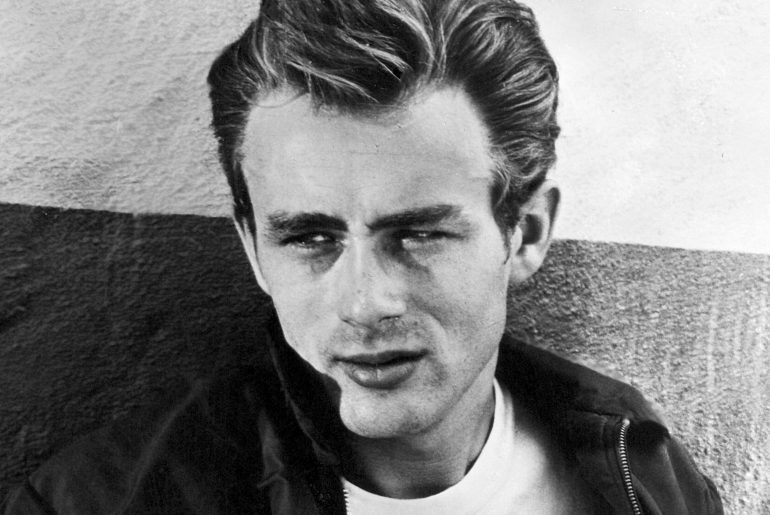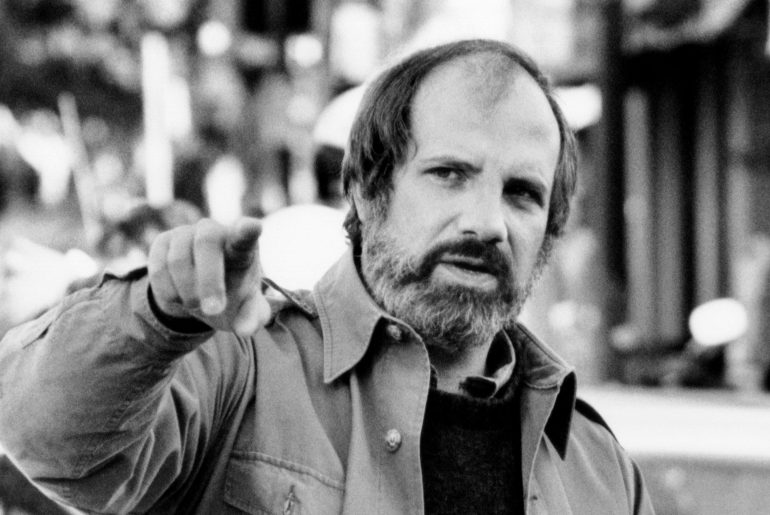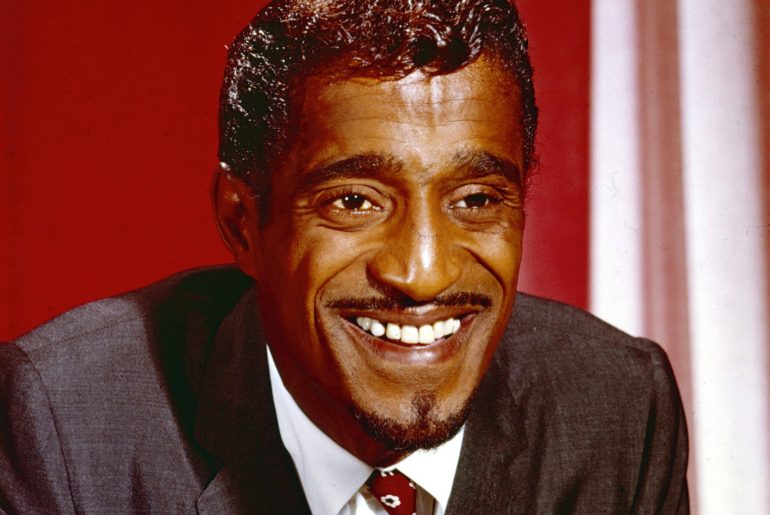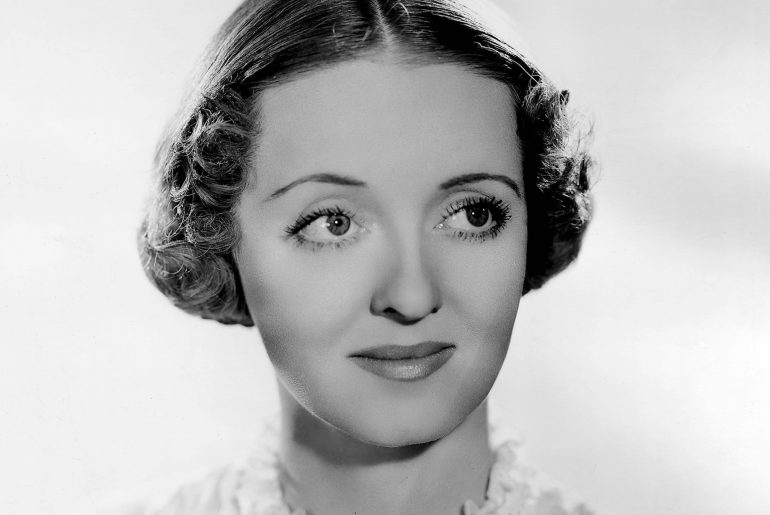The Moroccan model is being emulated on the continent, at least with Bola Ahmed Tinubu, candidate of the ruling party for the presidential election next February in Nigeria. The candidate of the “Congress of Progressives” party of current Nigerian President Buhari, who will not run again, believes that his country can aspire to build a nation like Morocco.
Nicknamed “The Godfather”, “The Kingmaker”, “The Boss”, Bola Ahmed Tinubu is a very influential Nigerian politician. For many in Nigeria, the influence of the historic leader of the Progressives Congress (APC) propelled Muhammadu Buhari, president in 2015, and secured his re-election in 2019. Rightly or wrongly, this is his greatest achievement, which has accentuated its weight on the Nigerian political spectrum.
Today, Bola Ahmed Tinubu can aspire to take over from President Buhari who has announced that he will not stand for a third term. The very influential ex-governor of Lagos was nominated, Wednesday, June 8, candidate of the ruling party for the presidential election of 2023. A clear majority of the 2,300 delegates of the Congress of Progressives voted for his candidacy.
It must be said that this wealthy 70-year-old Muslim, an ardent defender of democracy in exile during the military dictatorship of the 1990s, has climbed all the political levels. His fortune is much talked about: he is considered one of the richest men in the country, having shares in many companies ranging from media to aviation, including hotels and real estate.
This week, in statements reported by the Nigerian press including the daily newspaper The Punch, Bola Ahmed Tinubu did not hide his admiration for Morocco, after his victory in this APC primary organized in Abuja, the capital. During his speech, he indeed exposed the projects to be carried out if he is elected next year, as president of the country. “Yes, we are facing serious problems. But I believe that we have it within us to reach our most beautiful destiny. With God’s help, we will make this nation better for generations to come. The president, Major General Muhamamdu Buhari, has already laid a solid foundation in security, the economy and the fight against corruption. We will build on it for the salvation of our people. We can build a nation like Morocco,” he promised in remarks reported by The Punch. “I express my sincere gratitude to President Buhari for his calm and careful leadership throughout this process.” I also thank him for his unwavering determination to ensure a level playing field and a free and fair primary process for every aspirant. Without him, I would not be here today as the new flag bearer of the Nigerian party,” he added.
Once a distant country from Morocco, Nigeria and the Kingdom have grown closer in recent years, culminating in strong cooperation ever since. The two countries have initiated the gas pipeline project which will connect them through fifteen countries, an important step in this warming of relations between the two states, in addition to other aspects of their cooperation. This means that with Bola Ahmed Tinubu, the Kingdom will have an ally and unfailing support in this influential country on the continent.
Bola Tinubu is a Muslim and a member of the Yoruba ethnic group.
Bola Tinubu was elected as a Lagos State Senator for Lagos West Constituency in 1993, shortly before the 1993 military coup in Nigeria. After the restoration of democracy by Olusegun Obasanjo, he was elected Governor of Lagos State, a position he held from May 29, 1999, to May 29, 2007.
According to the magazine Jeune Afrique, after 2007, even if Bola Tinubu is no longer Governor of Lagos State, he continues to make it “rain and shine, especially with regard to the choice of his successors”.
Since the election of Muhammadu Buhari as President of the Republic, he has been considered the informal leader of the All Progressives Congress (APC). In 2018, he supported Adams Oshiomhole’s candidacy for the party’s presidency. He himself is then the “National Leader” of the party (he is one of the national leaders of the party).
In February 2018, President Muhammadu Buhari asked Bola Tinubu to resolve internal conflicts within the APC party, then in power in Nigeria. Bola Tinubu is appointed to head the party’s reconciliation committee, which is tasked with dealing with dissent issues within the party and reunifying the party. At the national convention in June 2018, he said his visit was to reconcile disgruntled party members and said, “my presence here symbolizes the solidarity and unity of our goals to continue building a progressive party that will move Nigeria forward and promotes good governance with courage and commitment”.
In March 2018, the 10th Bola Tinubu Colloquium is held, the idea of which was conceived in 1999 by close friends and associates of Bola Tinubu. They felt that some of the intellectual debates that took place in meetings that Bola Tinubu chaired should be captured in a venue that would broaden the discussion and lead to tangible results. For example, the theme of the 9th edition of the Colloquium in 2017 was “Producing it in Nigeria” and looked critically at how Nigerians can ensure that they produce what they use and that they use what they produce. The theme of the 8th edition, in 2016, was agriculture, and in 2015, during the seventh edition, “Change: How it will work”.
Tinubu is a candidate for the APC nomination for the presidential election of 202312. He won the APC nomination in June 2022 with 55.3% of the vote.
According to Jeune Afrique magazine, Lagos State, of which Tinubu was governor for 10 years, is the richest in the federation; if this state were independent, it would be the sixth economic power on the African continent. According to Sahara Reporters, under the governance of Bola Tinubu, “corruption and abuses, which have always taken place in governments, have become the norm: no longer abuses of a system, but an alternative system in itself”
After his tenure as Governor of Lagos State ended, he was arraigned before the Code of Conduct Court in Abuja and charged with “taking part in the operation and maintenance of several foreign bank accounts”, breaching thus Article 7 of the Code of Conduct. Among the bank accounts in question, one is in the name of “Bola Tinubu” at Citibank in New York, and another is in the name of “Senator Bola Oluremi Tinubu” at HSBC in London (Oluremi is the first name of his wife ). The Society for Rule of Law in Nigeria (SRLN – Society for the Rule of Law in Nigeria) accuses him of having lied under oath in 2004 when declaring in the declaration of assets form CCB-1 that he has submitted to the Code of Conduct Office. The SRLN welcomes this lawsuit against Tinubu, believing that corruption affects all parties in Nigeria. According to News of the People, Tinubu was able to escape trial, benefiting from a “political agreement to hand over the South West” to the People’s Democratic Party (PDP), Nigeria’s then-ruling party. “The federal government let Tinubu off the hook,” with the case thrown out by the court on technical grounds.
In 2007, Tinubu was accused by PointBlanknews.com of being part of an alliance of Nigerian governors that embezzled more than $140 million in public funds to acquire ownership of Global Satellite Mobile, a private GSM telephone company. He is under investigation by the Nigerian Economic and Financial Crimes Commission for “corruption and money laundering” but Tinubu and two other governors are cleared by the commission.
Nigeria: Things You Should Know About Bola Ahmed Tinubu
ELECTION. A look back at five points on the career of the influential ex-governor of Lagos, winner of the ruling party’s primary for the 2023 presidential election.
The godfather”, “the kingmaker”, “the boss”: there is no shortage of nicknames to designate Bola Ahmed Tinubu, a Nigerian politician as influential as he is controversial, nominated on Wednesday as the ruling party’s candidate for the 2023 presidential election. “I declares Bola Ahmed Tinubu as our party’s presidential candidate in the upcoming elections of 2023,” said Atiku Bagudu, election manager for the Progressives Congress (APC) primary held in Abuja, the capital. “Those who did not support me, you have nothing to fear. I will build the best nation for our children”, assured Bola Ahmed Tinubu after his victory.
Ex-Governor of Lagos
This wealthy 70-year-old Muslim, an ardent defender of democracy, in exile during the military dictatorship of the 1990s, climbed all the political levels according to accusations of corruption, without ever being convicted.
The former senator then governor of Lagos, the economic lung of the most populous country in Africa, the historic leader of the ruling party now covets the highest step: to become president, “the ambition of a lifetime”. “It’s my time, I’m educated, I have experience. It’s my turn, ”he insisted in early June.
And already in January, Bola Ahmed Tinubu slipped in front of journalists in Abuja: “I have not seen written anywhere that a kingmaker cannot be king”.
Because this man in the shadows hidden under his traditional Yoruba hat has retained considerable influence in his native region of the south-west after eight years (1999-2007) at the helm of Lagos, a megalopolis of 20 million inhabitants.
Kingmaker
For many in Nigeria, the influence of the historic leader of the Progressives Congress (APC) propelled Mr Buhari President in 2015 and secured his re-election in 2019. Rightly or wrongly, it was his greatest achievement that accentuated its weight on the Nigerian political spectrum. Especially since it was the first democratic alternation at the head of Nigeria, since the end of the military dictatorships and the return of democracy in 1999. In 2015, the APC put an end to the reign of the People’s Democratic Party (PDP), in power for 16 years.
But as leader of the APC, Bola Tinubu is weakened by the more than mixed record of President Buhari, who is ending his second term under fire from critics. The former putschist general has failed to stem the widespread violence between jihadist groups in the Northeast, criminal gangs in the center and Northwest, and separatist unrest in the Southeast.
Without mentioning the economic slump and, out of the 220 million inhabitants, the approximately 80 million Nigerians who still live below the extreme poverty line. “The boss” can therefore appear as “belonging to an old political class short of ideas, present for too long on the political scene, which is seen as a fault”, explains Udo Jude Ilo, of the Open Society Initiative for West Africa (Osiwa).
Especially after the bloody crackdown on a peaceful protest in Lagos in 2020 that exposed the divide between a youth hungry for change – 60% of Nigerians are under 25 – and an elderly elite, personified by the president (79).
A controversial character
Especially since Bola Tinubu will be opposed during the presidential election to Atiku Abubakar, a 75-year-old former vice-president and candidate of the PDP, the main opposition party. And in a video published by the local press, Mr. Tinubu launched to the youth: “You too will grow old, you will become president, but I will be president first. »
“He is also a controversial figure because of the corruption allegations, although he has many supporters who consider him a visionary,” continues Mr. Jude Ilo.
After stepping down as governor of Lagos, Mr. Tinubu was indicted for bribery, money laundering, and having more than a dozen overseas accounts and later cleared.
Insecurity at the heart of the future campaign
Security will be a major issue in this election, the country being bruised almost daily by criminal and jihadist violence. The massacre of 22 people on Sunday in a church in the southwest of the country, a region relatively spared from the violence, is a cruel reminder of this.
“No destructive force can bring Nigeria back”, assured Bola Tinubu after his victory, praising the work of the security forces and calling on them to “continue the fight for the survival of the nation”.
- Those who did not support me, you have nothing to fear. I will build the best nation for our children”, assured Mr. Tinubu
- This wealthy 70-year-old Muslim, an ardent defender of democracy in exile during the military dictatorship of the 1990s, rose through the political ranks on corruption charges, without ever being convicted.
LAGOS: “The godfather”, “the kingmaker”, “the boss”: there is no shortage of nicknames to designate Bola Ahmed Tinubu, a Nigerian politician as influential as it is controversial, nominated on Wednesday as the ruling party’s candidate for the 2023 presidential election.
“Those who did not support me, you have nothing to fear. I will build the best nation for our children”, assured Mr. Tinubu after his victory in the primary of the Congress of Progressives (APC) organized in Abuja, the capital.
This wealthy 70-year-old Muslim, an ardent defender of democracy in exile during the military dictatorship of the 1990s, climbed all the political levels through accusations of corruption, without ever being convicted.
Former senator then governor of Lagos, the economic lung of the most populous country in Africa, the historic leader of the ruling party now covets the highest step: to become president, “the ambition of a lifetime”.
“It’s my time, I’m educated, I have experience. It’s my turn, ”he insisted in early June.
And already in January, Mr. Tinubu slipped in front of journalists in Abuja: “I have not seen written anywhere that a kingmaker cannot be king”.
Because this man in the shadows hidden under his traditional Yoruba hat has retained considerable influence in his native region of the south-west after eight years (1999-2007) at the helm of Lagos, a megalopolis of 20 million inhabitants.
A fine strategist, he has always been perceived as the man behind all the political appointments in his stronghold while clientelism remains omnipresent in Nigeria, even boasting of having elected President Buhari.
“Out of Ideas”
For many in Nigeria, the influence of the historic leader of the Progressives Congress (APC) propelled Mr. Buhari to President in 2015 and secured his re-election in 2019. Rightly or wrongly, it was his greatest success that accentuated its weight on the Nigerian political spectrum.
Especially since it was the first democratic alternation at the head of Nigeria, since the end of the military dictatorships and the return of democracy in 1999. In 2015, the APC put an end to the reign of the People’s Democratic Party (PDP), in power for 16 years.
But, as leader of the APC, Bola Tinubu is weakened by the more than mixed record of President Buhari, who is ending his second term under fire from critics.
The former putschist general, who announced that he would not stand for a third term, was unable to stem the widespread violence between jihadist groups in the northeast, criminal gangs in the center and northwest, and separatist unrest in the southeast.
Not to mention the economic slump and, of the 220 million inhabitants, the approximately 80 million Nigerians who still live below the extreme poverty line.
“The boss” can therefore appear as “belonging to an old political class short of ideas, present for too long on the political scene, which is seen as a fault”, explains Udo Jude Ilo, of the Open Society Initiative for West Africa (Osiwa).
Me first
Especially after the bloody crackdown on a peaceful protest in Lagos in 2020 which exposed the divide between a youth hungry for change – 60% of Nigerians are under 25 – and an elderly elite, personified by the President (79).
Especially since Bola Tinubu will be opposed during the presidential election to Atiku Abubakar, a 75-year-old former vice-president and candidate of the PDP, the main opposition party.
And in a video published by the local press, Mr. Tinubu launched to the youth: “You too will grow old, you will become president but I will be president first. »
“He is also a controversial figure because of the corruption allegations, although he has many supporters who consider him a visionary,” continues Mr. Jude Ilo.
After stepping down as governor of Lagos, Mr Tinubu was indicted and later cleared of corruption, money laundering, and having more than a dozen overseas accounts.
His fortune – the exact source and amount of which are unknown – is widely talked about: he is considered one of the richest men in the country, having shares in many companies, from the media to aviation, including hotels and real estate.
As a reminder, the presidential election in Nigeria is scheduled for February 25, 2023, to elect a new president to succeed Muhammadu Buhari. Bola Ahmed Tinubu will thus be opposed during this presidential election to Atiku Abubakar, a 75-year-old former vice-president, and candidate of the PDP, the main opposition party.
FAQs
Where is Bola Ahmed Tinubu originally from?
Lagos, Nigeria
Who is the first wife of Bola Ahmed Tinubu?
| Born | 21 September 1960 (age 62) |
| Political party | All Progressives Congress (APC) |
| Spouse | Bola Tinubu |
| Education | WASSCE, PGD, B.S. in Education, National Certificate of Education in Botany and Zoology. |
| Alma mater | University of Ife Adeyemi College of Education |
| Occupation | Pastor/Politician |
Who is the biological mother of Bola Tinubu?
Chief Mogaji was the mother of the national leader of the All Progressives Congress and ex-governor of Lagos State, Chief Bola Tinubu.
How old is Asiwaju Bola Ahmed Tinubu?
70 years
March 29, 1952
When was Bola Ahmed Tinubu born?
March 29, 1952
Who is Tinubu wife?
Oluremi Tinubu
What are the names of Tinubu children?
Folashade Tinubu‑Ojo
Seyi Tinubu
Jide Tinubu
Abibat Tinubu
Is Wale Tinubu related to Bola Tinubu?
Adewale Tinubu is the nephew of Chief Bola Tinubu, a Nigerian politician and former governor of Lagos State, and the national leader of the All Progressives Congress.
Who is Tinubu’s daughter?
Folashade Tinubu-Ojo
Abibat Tinubu
Is Tinubu adopted?
Momoh’s children from other wives later adopted the Tinubu name.
What is Tinubu net worth Forbes?
Networth: $8.4 billion (₦3 trillion 46 billion)
Who is Tinubu Square named after?
Tinubu Square (formerly Independence Square), is an open space landmark located in Broad Street, Lagos Island, Lagos State, Nigeria named after the Yoruba slave trader, merchant, and aristocrat Madam Efunroye Tinubu.
Who is the owner of Tinubu Square?
Madam Tinubu
Who is the first woman to buy a car in Nigeria?
Madam Efunroye Tinubu was the first Nigerian woman to buy a car; she was also the first Iyalode of the Egba clan.
When was Tinubu Square built?
Tinubu Square was built in 1960 by the Lagos State Government.
What is the age of Remi Tinubu?
62 years
September 21, 1960











